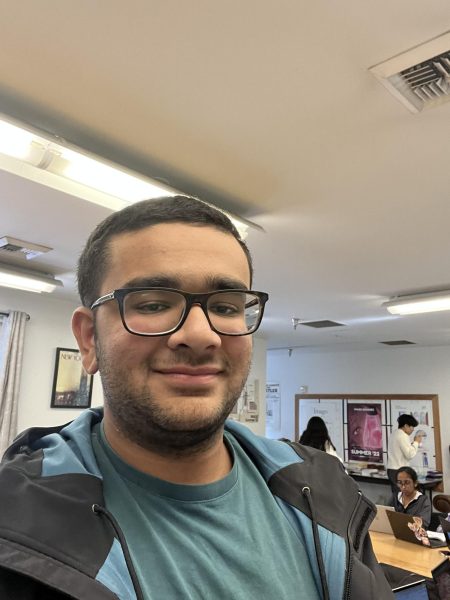Are you an intrepid Lakesider who loves competing, is stimulated by interesting problems, or perhaps wants to show off to colleges? Then you’ve come to the right place! A deep dive into various STEM olympiads never harmed anyone (yet). Without further ado, here’s your Olympiad shortlist:
Mathematics Olympiad (USAMO):
Ah, an oldie but a goldie — and also a Lakeside favorite (every year, we have 60-80 students participating). Over the past seventy years, the USAMO has been the gold standard of competition math in the US (cheating scandals notwithstanding), and the competition is difficult and prestigious. With three rounds just to reach MOP (the Math Olympiad Summer Program), and several more before selection for the International Math Olympiad, you’ll be competing with almost 100,000 mathematicians across the United States — many of whom you might become friends with for years thereafter. There are countless resources online for math competitions — I’d suggest starting on AOPS or looking at any competition’s past tests. By the way, there’s (allegedly) no calculus or higher math on the olympiads — though recently, it’s proving useful as a secondary method of solving a couple types of problems: geometry restrictions (find the maximum/minimum of a parameter given some conditions) and inequalities.
Physics Olympiad (USAPhO):
“Physics is like math with physical intuition.” – Me
If you like math, but feel that your brain works much better with intuitive arguments rather than rigorous proofs, physics might be for you! (I’ll note: there is still a strong correlation between USAMO and USAPhO performance). There are also just two rounds before camp, at which the US team for the International Physics Olympiad is decided. Of course, there are more “topics” to learn than in mathematics — for the first round (the F=ma exam), all you need is kinematics, but for the second round, you should be comfortable with everything from special relativity to inductors to “basic” quantum mechanics. In general, the USAPhO “curriculum” follows Halliday, Resnick and Krane’s “Physics” (note that the 2012 “Introduction to Physics” is an entirely different book).
Astronomy Olympiad (USAAAO/ NAC):
A personal favorite (literally because it’s the only one I can do decently in). This olympiad is for people who like physics but wish the test was… really difficult. And that’s not an exaggeration: last year, to get tenth place, you would’ve needed just 85 out of 225 possible points. Like the physics olympiad, there are two rounds, with the latter qualifying you for a (presently online) camp and/ or the International Olympiad in Astronomy and Astrophysics (IOAA) team. To do well, you need a strong command of physics and knowledge in topics special to astronomy — like telescope optics, field of view, or stellar evolution. Online resources exist, and they’re much easier to parse than rigorous textbooks like Carrol and Ostlie (the gold standard of “introductory” astronomy textbooks). Overall, astronomy is definitely a newer competition, but that means it’s often easier to do well than with math or physics — plus it relies much more heavily on intuition and simplification than
USAPhO. Chemistry Olympiad (USNCO):
I’m not gonna lie, the process for USNCO is a bit…goofy — mainly because it’s the only exam with a local component (which usually means that if you’re in a place like Seattle, you might get cooked more than black phosphorus when it comes into contact with the air). In general, Lakeside administers/will administer the first round of the exam (ask a chemistry teacher), and to make the second round, you have to be above a certain cutoff (50ish out of 60) or top two in school. After that, it proceeds like any other olympiad with a national round and training camp. I’ve heard the math on the olympiad can sometimes get wack, but some sections (organic chem) are fairly BS-able. If you decide to do this, the gold standard textbook is “Chemistry” by Atkins. The olympiad itself is like physics or biology in prestige.
Biology Olympiad (USABO):
There are two types of biology olympiad questions: the ones that force you to find nine out of twenty as a percentage (I’m not even kidding) and those that require you to determine the genus of a bacterium based on five seemingly unrelated facts. I always liked the first type of question, mainly because I couldn’t even understand the other type. There’s a decent amount of memorization for the olympiad, but not as much as haters would like you to believe — many, if not most, questions require a solid level of problem solving reminiscent of any USAPhO problem. There are two “real rounds” (what they call the “final” round is just camp), with cutoffs for the second round ordinarily being around 25 out of 50 questions. Campbell’s (in)famous biology book is a popular choice for this olympiad.
Earth Science Olympiad (USESO) Imagine lava, volcanos, earthquakes, and blowing stuff up — but with math and writing! Hooray! Also you have to classify types of rocks…but no shade on the USESO at all — it’s actually quite a difficult exam since you essentially have to self-study earth science from scratch. There’s actually only one round of this exam, and who makes it to the in-person camp is determined primarily by your score, but also — calling all humanities people — a personal essay about none other than you! I actually don’t know what the “best” resources for USESO are, so go ask Vishnu M. ’26 about it.
If you’re curious about STEM olympiads, I’d strongly encourage you to take one or a few — you’ve got nothing to lose except 75 minutes (sometimes you even “have to” skip class), and a secret passion for a whole field of science (or fancy stuff on your colleges apps) to gain.



